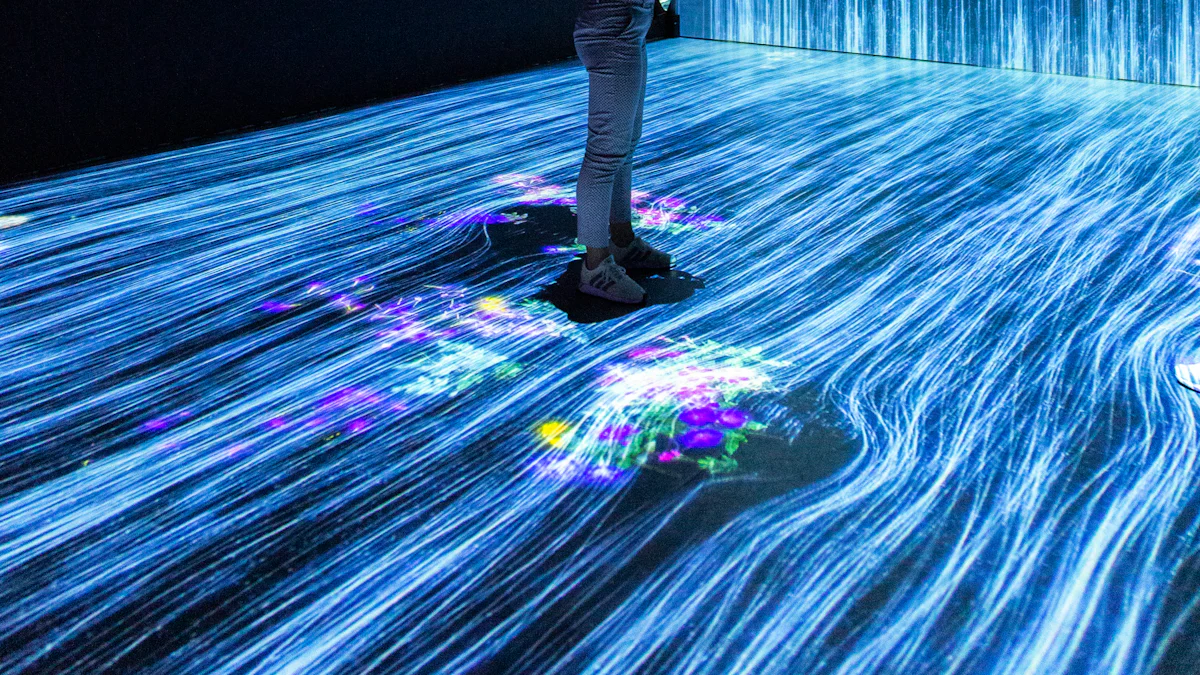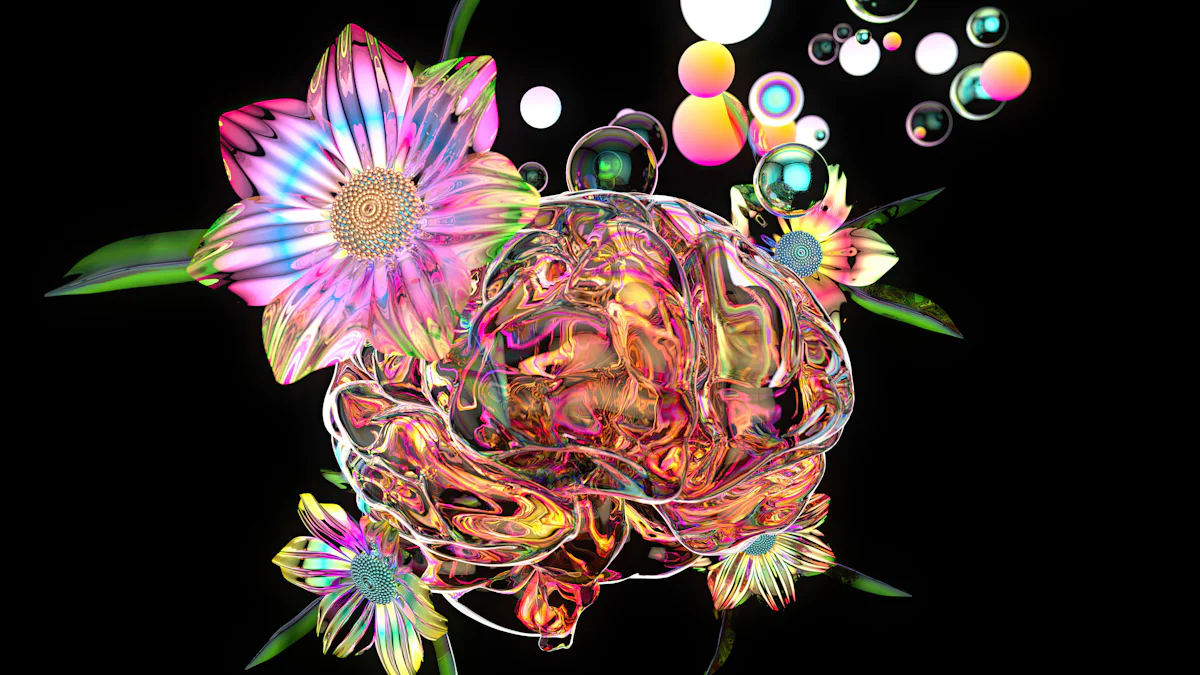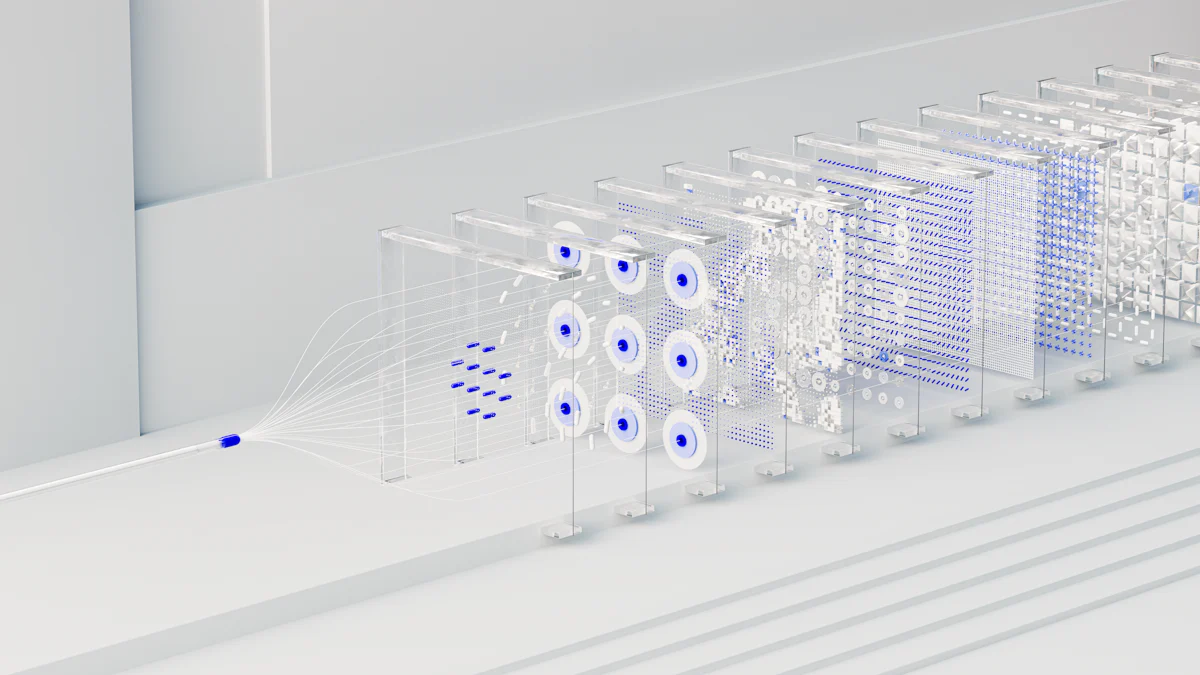The Role of Neural Networks in Generative AI

Neural Networks have revolutionized the way machines learn and create. You might wonder why understanding these networks is crucial today. They form the backbone of generative AI, enabling machines to produce content that mimics human creativity. This blog aims to shed light on how these networks function and their significance in modern technology. By grasping their role, you can appreciate the advancements in AI and its impact on various fields.
Understanding Neural Networks
Definition and Basic Concepts
Neural Networks are computational models inspired by the human brain. They consist of interconnected nodes, or neurons, that process information. You can think of them as a series of mathematical operations that transform input data into meaningful output.
Structure of Neural Networks
The structure of Neural Networks includes layers: an input layer, one or more hidden layers, and an output layer. Each layer contains nodes that connect to nodes in the next layer. You provide data to the input layer, and the network processes it through the hidden layers. The output layer then delivers the final result. This layered structure allows Neural Networks to learn complex patterns.
How Neural Networks Learn
Neural Networks learn through a process called training. You feed them data, and they adjust their internal parameters to minimize errors. This adjustment happens through a method known as backpropagation. During training, the network compares its output to the desired result and calculates the error. It then updates the weights of the connections to reduce this error. Over time, the network improves its accuracy.
Types of Neural Networks
Neural Networks come in various types, each suited for different tasks. Understanding these types helps you choose the right model for your needs.
Convolutional Neural Networks (CNNs)
Convolutional Neural Networks, or CNNs, excel at processing visual data. They use convolutional layers to detect patterns like edges and textures in images. You often find CNNs in applications such as image recognition and computer vision. Their ability to capture spatial hierarchies makes them powerful tools for analyzing visual content.
Recurrent Neural Networks (RNNs)
Recurrent Neural Networks, or RNNs, are designed for sequential data. They have loops that allow information to persist, making them ideal for tasks involving time series or language. You might use RNNs for applications like speech recognition or text generation. Their ability to remember previous inputs gives them an edge in handling sequences.
Generative Adversarial Networks (GANs)
Generative Adversarial Networks, or GANs, consist of two parts: a generator and a discriminator. The generator creates new data samples, while the discriminator evaluates them. You can think of GANs as a game where the generator tries to fool the discriminator. This adversarial process leads to the creation of realistic data. GANs have gained popularity for generating images, music, and even video content.
Introduction to Generative AI
Definition and Overview
Generative AI refers to a branch of artificial intelligence that focuses on creating new content. Unlike traditional AI, which often analyzes or categorizes data, generative AI produces original outputs. You can think of it as a creative tool that mimics human creativity by generating images, music, text, and more.
Key Characteristics of Generative AI
Generative AI stands out due to its ability to create rather than just process. Here are some key characteristics:
Creativity: It generates new content that resembles human-made creations.
Adaptability: It learns from existing data and adapts to produce varied outputs.
Interactivity: It can engage with users, offering personalized content based on preferences.
These features make generative AI a powerful tool in fields like entertainment, design, and education.
Differences from Traditional AI
Traditional AI and generative AI serve different purposes. Traditional AI focuses on tasks like classification, prediction, and optimization. It analyzes data to provide insights or automate processes. In contrast, generative AI creates new data. You can see this difference in applications: traditional AI might sort emails, while generative AI could compose a new song.
Historical Context
Understanding the history of generative AI helps you appreciate its current capabilities and future potential.
Evolution of Generative AI
Generative AI has evolved significantly over the years. Initially, researchers focused on rule-based systems that followed strict guidelines. As technology advanced, machine learning techniques emerged, allowing AI to learn from data. This shift enabled more sophisticated generative models, paving the way for today's advanced systems.
Milestones in Development
Several milestones mark the development of generative AI:
Early Experiments: In the 1960s and 1970s, researchers began exploring AI's creative potential with simple programs.
Neural Networks: The introduction of neural networks in the 1980s and 1990s revolutionized AI, providing a foundation for generative models.
GANs: In 2014, Ian Goodfellow introduced Generative Adversarial Networks (GANs), a breakthrough that enhanced AI's ability to generate realistic content.
Deep Learning: Recent advances in deep learning have further improved generative AI, enabling it to produce high-quality images, text, and more.
These milestones highlight the rapid progress in generative AI, showcasing its growing impact on technology and society.
The Intersection of Neural Networks and Generative AI
Neural networks play a crucial role in the realm of generative AI. They provide the computational power and learning capabilities that enable machines to create new and innovative content. By understanding how these networks function within generative AI, you can appreciate their transformative impact on technology and creativity.
How Neural Networks Power Generative AI
Neural networks serve as the foundation for generative AI, allowing it to learn from data and produce original outputs. They excel at recognizing patterns and structures, which is essential for generating realistic content.
Role of GANs in Generative AI
Generative Adversarial Networks (GANs) stand out as a significant innovation in generative AI. GANs consist of two neural networks: a generator and a discriminator. The generator creates new data samples, while the discriminator evaluates them. This adversarial process pushes the generator to improve its outputs continually. You can think of GANs as a creative duel where the generator strives to produce content indistinguishable from real data. This dynamic interaction results in highly realistic images, music, and more.
Neural Network Architectures in Use
Various neural network architectures contribute to the success of generative AI. Convolutional Neural Networks (CNNs) and Recurrent Neural Networks (RNNs) are commonly used. CNNs excel in processing visual data, making them ideal for image generation tasks. RNNs, on the other hand, handle sequential data effectively, which is crucial for text generation. These architectures, along with GANs, form the backbone of generative AI, enabling it to create diverse and complex content.
Examples of Neural Network-Driven Generative AI
Neural networks have enabled generative AI to produce remarkable results across different domains. Here are some examples of how these networks drive innovation:
Image Generation
Neural networks have revolutionized image generation. They can create stunning visuals that mimic real-world photographs or artistic styles. You might have encountered AI-generated art or realistic images that were entirely machine-created. These networks analyze vast amounts of visual data to learn patterns and textures, allowing them to generate new images that are both unique and convincing.
Text Generation
In the realm of text generation, neural networks have made significant strides. They can compose coherent and contextually relevant text, from short stories to news articles. You might use AI-driven tools to generate written content, assist in writing tasks, or even create dialogue for virtual characters. Neural networks process language data, learning grammar, syntax, and context, enabling them to produce human-like text.
Applications of Generative AI

Generative AI has found its way into various sectors, transforming how industries operate and enhancing everyday experiences. By understanding its applications, you can see its potential to revolutionize different fields.
Industry-Specific Applications
Entertainment and Media
In the entertainment and media industry, generative AI plays a pivotal role. You can witness its impact in the creation of visual effects, music, and even scripts. AI-generated content can enhance movies and video games by producing realistic environments and characters. Additionally, AI can compose music that resonates with audiences, offering new creative possibilities for artists and producers. By leveraging generative AI, the entertainment industry can push the boundaries of creativity and storytelling.
Healthcare and Medicine
Generative AI is making significant strides in healthcare and medicine. It assists in drug discovery by simulating molecular structures and predicting their interactions. You can also find AI-generated models that help in diagnosing diseases by analyzing medical images. These applications improve accuracy and speed in medical research and treatment. By integrating generative AI, healthcare professionals can enhance patient care and develop innovative solutions to complex medical challenges.
Everyday Use Cases
Personal Assistants
Generative AI powers personal assistants that you might use daily. These AI-driven tools can generate responses, schedule appointments, and provide recommendations based on your preferences. By learning from your interactions, they offer personalized experiences that make your life more convenient. Whether you're asking for the weather forecast or setting a reminder, generative AI enhances the functionality of personal assistants, making them indispensable in modern life.
Creative Tools
In the realm of creativity, generative AI offers tools that inspire and assist you. From generating art to crafting written content, AI-driven creative tools provide new avenues for expression. You can use these tools to brainstorm ideas, design graphics, or even write stories. By harnessing the power of generative AI, you can explore your creativity and produce unique works that reflect your vision. These tools democratize creativity, allowing anyone to become an artist or writer with the help of AI.
Challenges and Limitations
Generative AI, while powerful, faces several challenges and limitations. Understanding these can help you navigate the complexities of this technology.
Technical Challenges
Data Requirements
Generative AI models require vast amounts of data to function effectively. You need diverse and high-quality datasets to train these models. Without sufficient data, the AI might produce inaccurate or biased results. Gathering and curating such data can be time-consuming and costly. You must ensure that the data represents a wide range of scenarios to improve the model's performance.
Computational Costs
Running generative AI models demands significant computational resources. You need powerful hardware and specialized software to process large datasets and complex algorithms. This requirement can lead to high operational costs. You might face challenges in scaling these models due to resource constraints. Efficient resource management becomes crucial to balance performance and cost.
Ethical and Social Concerns
Bias in AI Models
Bias in AI models poses a significant ethical concern. If the training data contains biases, the AI might replicate them in its outputs. You must carefully select and preprocess data to minimize bias. Ensuring fairness and transparency in AI models requires ongoing monitoring and evaluation. Addressing bias is essential to build trust and credibility in AI systems.
Impact on Employment
Generative AI's ability to automate tasks raises concerns about its impact on employment. You might worry about job displacement as AI takes over certain roles. However, AI can also create new opportunities by enhancing productivity and innovation. You should focus on reskilling and upskilling to adapt to the changing job landscape. Embracing AI as a tool for collaboration rather than competition can lead to positive outcomes for the workforce.
Future Implications

As you explore the future of generative AI, you will notice significant advancements in neural networks. These developments promise to enhance AI's capabilities and broaden its applications.
Advancements in Neural Networks
Neural networks continue to evolve, offering new possibilities for generative AI. You will find that emerging technologies and potential breakthroughs are shaping the future landscape.
Emerging Technologies
Emerging technologies in neural networks are paving the way for more sophisticated AI systems. Quantum computing, for instance, holds the potential to revolutionize how neural networks process information. With quantum computing, you can expect faster data processing and more efficient learning algorithms. This advancement could lead to more powerful generative AI models capable of handling complex tasks with ease.
Another promising technology is neuromorphic computing. This approach mimics the human brain's structure and function, allowing neural networks to operate more efficiently. By adopting neuromorphic computing, you can achieve energy-efficient AI systems that perform tasks with minimal power consumption. This technology could make AI more accessible and sustainable in the long run.
Potential Breakthroughs
Potential breakthroughs in neural networks could transform generative AI. One such breakthrough is the development of more advanced deep learning models. These models can learn from smaller datasets, reducing the need for extensive data collection. As a result, you can create AI systems that are both efficient and effective, even with limited resources.
Another potential breakthrough involves improving the interpretability of neural networks. By making these networks more transparent, you can better understand how they make decisions. This understanding can lead to more trustworthy AI systems, fostering greater acceptance and adoption across various industries.
The Future of Generative AI
The future of generative AI holds exciting possibilities. As neural networks advance, you can expect generative AI to have a profound impact on society.
Long-term Impact on Society
Generative AI's long-term impact on society will be significant. You will see AI systems enhancing creativity and innovation across multiple fields. In education, generative AI can personalize learning experiences, catering to individual needs and preferences. In healthcare, AI can assist in developing personalized treatment plans, improving patient outcomes.
Moreover, generative AI can drive economic growth by creating new industries and job opportunities. As AI systems become more integrated into daily life, you will witness a shift in how people work and interact with technology. This shift will require adaptation and continuous learning to keep pace with technological advancements.
Predictions and Speculations
Predictions and speculations about generative AI's future abound. Some experts believe that AI will eventually surpass human creativity, producing content that rivals or even exceeds human-made creations. You might see AI-generated art, music, and literature becoming mainstream, challenging traditional notions of creativity.
Others speculate that generative AI will play a crucial role in solving global challenges. By harnessing AI's capabilities, you can address issues like climate change, resource scarcity, and disease outbreaks. Generative AI could provide innovative solutions that improve quality of life and promote sustainability.
FAQs and Common Queries
Addressing Common Questions
How Safe is Generative AI?
You might wonder about the safety of generative AI. This technology, like any other, comes with its own set of risks and benefits. Generative AI can produce realistic content, which sometimes leads to concerns about misuse. For example, people might use it to create deepfakes or spread misinformation. However, developers implement safeguards to minimize these risks. They design systems to detect and prevent malicious use. You can also play a role in ensuring safety by staying informed and using AI responsibly.
Can Generative AI Replace Human Creativity?
Generative AI has impressive capabilities, but it cannot fully replace human creativity. You possess unique qualities that machines cannot replicate, such as intuition, emotion, and cultural understanding. AI can assist and enhance your creative process by generating ideas or providing inspiration. It acts as a tool that complements your creativity rather than replacing it. You can use AI to explore new possibilities and push the boundaries of your imagination. Embracing AI as a partner in creativity allows you to achieve remarkable results while maintaining your distinct human touch.
Neural Networks have become the backbone of generative AI, enabling machines to create content that mimics human creativity. You have seen how these networks learn and adapt, making them essential in various applications. As technology advances, Neural Networks will continue to shape the future of AI. You should explore this field further to understand its potential and impact. By learning more about Neural Networks, you can appreciate their role in driving innovation and creativity.
See Also
The Essence of Generative AI: Unveiling Its Unique Nature
Decoding Generative AI: Its Functionality and Operation
Insight into How Generative AI Models Learn
